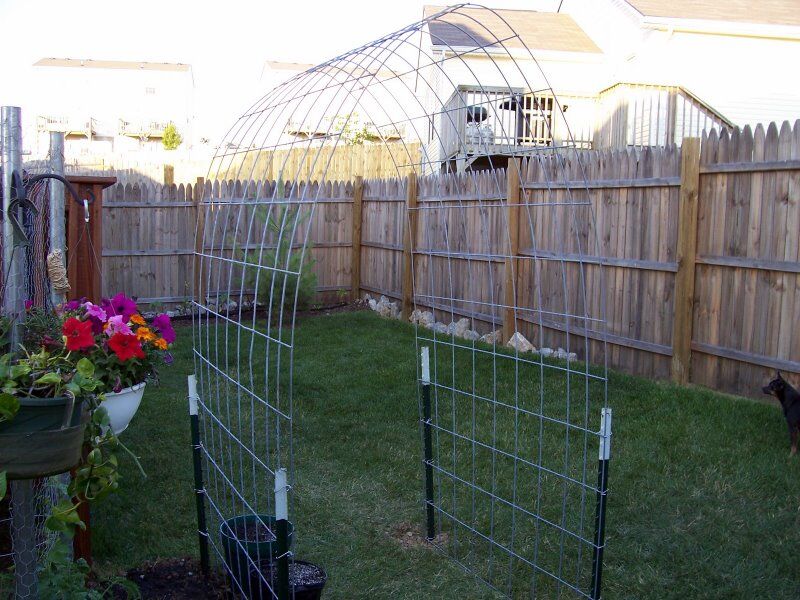Do you have a tiny yard? How about a yard that is mostly covered in shade during the day? Do you think you can’t have a garden because there isn’t enough room? If you have any space at all in your yard that gets at least six hours of sunlight (more is, of course, even better) you can grow vegetables there, and probably more than you think you have room for.
You might be surprised how many plants can be grown on a trellis. Peas and beans are the obvious choice, but did you ever consider watermelon, pumpkin, or other larger items? Squash and melons traditionally take up a lot of garden space because the plants tend to spread out across huge areas, blocking sunlight and choking out other plants. Because of this, a lot of people don’t feel like they can grow these plants, but with a little ingenuity, they can be grown vertically, leaving more space for other plants. Even tomatoes can be tied to a trellis to make them more vertical. This has the advantage of lifting the fruits off the ground so you have less rot and disease.
There are a few important things to remember when building a trellis. First, It needs to be placed at the back of the garden plot. Especially if your garden is covered in shade, or even dappled shade for part of the day, be sure the trellis is at the back so it won’t shade the rest of the bed. You may want to check the movement of the sun and where the shadows land in your yard so you can figure the best angle and location for the trellis. Remember that winter shadows are different than in the summer so if you don’t remember where the shady areas end, you may have to do some guess work. The back side of my house doesn’t get any sunlight from October through February, but the rest of the year it gets bits of morning and evening sun.
Next, consider what your budget is, and what you have on hand to work with. I’ve seen trellises made from T posts, PVC, conduit, or wooden posts, with netting or wire strung across them. Some people use hog panels, while others prefer field fence (an inexpensive wire fence with six-inch square holes). I wouldn’t use netting if you are growing watermelon or pumpkin unless it’s extremely strong.
When the squash or melon starts to get to the size of a large tomato, you’ll need to create a sling for it to keep them from falling from the vine. Fruit netting like some oranges, onions, or potatoes come in can be tied to the fencing on each side to provide support for the growing produce. I would probably only trellis medium to small melons, but if your structure is strong enough and your sling can handle the weight, there’s no reason you can’t grow larger varieties–though I’m not talking about giant pumpkins here.
Another trellis option pictures above is a cattle or pig panel to make an arch. The panels generally come in sixteen-foot lengths and are quite sturdy, but will allow some bending. These can be purchased at most feed stores and will last for years because they are so durable. I know of at least one woman who planted her lettuce under the trellis and as the summer heat came on, the plants growing on it provided shade to protect the lettuce–which doesn’t like the heat very much.
If you have an existing wall or fence, wire could also be attached to it to provide support for vegetables or flowering vines. The possibilities are endless.
If you don’t have any fencing supplies and are on a tight budget, check your local Craig’s list, or in Utah, you can also check KSL.com Classifieds for listing of free or nearly free building supplies.
Also, Danyelle is the winner of the free seeds for Winter Sowing! Congrats Danyelle, I’ll be sending those out soon.


Great idea, Heather! We grew some squash down into our window wells this past year, and it worked out well except for the fact that we couldn’t always reach the veggies easily at picking time. Still, it saved a lot of garden space.
Nichole
A pumpkin on a trellis would be hysterical, though!